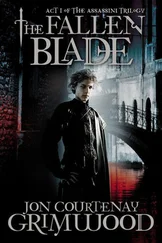Finally after more than two months, a ridiculously long time, Little Red figured out sit, and once she got that, it was almost as if she figured out the whole game. Suddenly she seemed to understand that they were asking her to do things, and when she did them she got rewarded. She learned fast after that and made up ground on the dogs who’d moved ahead of her. She learned stay, down, and come commands. She walked on a leash, which she had at first refused to do.
She enjoyed the facilities at Best Friends, which included a large exercise run the dogs were allowed to use every day and an obstacle course that challenged them with a series of apparatuses that required climbing, crawling, and agility. There were balance beams and hurdles and tunnels to climb through. Besides providing exercise and fun, the obstacles helped build confidence.
Still, the Best Friends staff moved slowly. There was no need to rush as even the best of the lot would have to stay a year before they could even be considered for a foster home. Besides showing dramatic improvement in Best Friends’ internal evaluations, any foster dog would also have to pass the Canine Good Citizen test. That was the ultimate goal and Best Friends knew it was a distant one. For some of the dogs it might never happen, so the staff proceeded with an eye to the very long term future.
Part of the program for dogs that were trying to overcome fear was routinely introducing them to new places and situations, which would slowly teach them that they could go out into the world without so much fear. The daily routine soon incorporated long walks to explore the different sights and structures within Angel Canyon.
Some days Little Red would take on a path that looped out from the dog compound and wandered through a variety of settings and situations. Other days she might head off to the “dog park,” a two-acre grassy field with a fence around it where she could be turned loose to play and romp. She might scale a ridge or sit by the side of the road and look at passing cars. Little Red adapted. She wasn’t progressing the fastest, but she was doing better than some of the others. Some dogs were so fearful that if a bench that sat along the path was moved from one spot to another they would freak out and refuse to walk past it.
She excelled at her relationships with the people she knew. Best Friends staffers continued to sleep in the buildings holding the Vick dogs for the first six months. Each night they would bring one dog out to sleep with them. For her first such stay Hendrick brought Little Red. It was a good choice as the dog quickly snuggled in for a comfy night. Before long Little Red had a reputation as one of the best bedtime buddies, and she became a favorite when attendants were choosing a dog to hang out with for the night.
The charts that tracked her behavior and attitude were trending in the right directions. Registered daily on a scale of one to ten, her fear index had hovered above five in the early months, spiking at eight. Now, six months in, she could have wild day-to-day swings, but her median reading was below four. Her confidence rating started close to four and had climbed to near five. Likewise, energy, enrichments, and enjoyment of life were all up.
On paper and within the bounds of her newly formed world, Little Red was growing happier and more sure of herself, but up to now she’d been isolated from other dogs. The staff at Best Friends decided it was time to begin introducing her to her canine neighbors. Their ultimate goal was to get the dogs comfortable enough with other dogs that they could be integrated into the larger Best Friends population and live in a typical kennel setup with one or two others. They had already started this integration process with some of the other Vick dogs and had found success.
Little Red was next, although her situation was different. Her multiple scars and worn-down teeth led many to suspect that she had been a bait dog, one used for practice by the fighters. When a dog that has had that experience feels threatened, it’s more likely to lash out. Its fear and insecurity can lead to aggression, and it’s inclined to attack first as a form of defense.
The staff was well aware of this possibility when it took Little Red into a fenced area and then strolled into view with Cherry Garcia, another Vick dog who was known for his mellow disposition. As soon as Little Red, the sweet snuggly sleeper who loved to smile at people, saw Cherry, she stood at attention. Both dogs stared at each other across the compound.
BOUNCER HAD FINALLY RETURNED to earth and it was not a soft landing. For the first few days in Marthina McClay’s house, the big lug didn’t know where he was or what to do with himself. He had no interest in food. In the crate he whined and peed. Let out of the crate he would pace, from one end of the house to the other, back and forth, endlessly. As McClay watched him circle the layout she thought she was seeing him literally unwind his stress.
In the evenings she would put him in his crate, dim the lights, play soft music, and sit with him. It took five days before he would sit next to her outside the crate, and even then it was brief. She began stroking him gently and offering up little massages, which he seemed to like and hang around for. When given toys, he chewed at them for a minute but didn’t really know how to hold them in his paws and gnaw at them.
Bouncer was less than thrilled to meet McClay’s other dogs. He wasn’t fearful or aggressive but something closer to suspicious. Though not obvious, he had scars, mostly on his front legs, and he seemed wary of the presence of other pit bulls. McClay did have a purpose for the other dogs. She had started training Bouncer almost immediately and the other dogs were part of her approach.
Born in Wichita, Kansas, McClay moved to Palo Alto, California, as an infant. From her youngest days her family had German shepherds, and she says her earliest memory is of her hand rubbing against fur. Later the family owned Dobermans, and Marthina befriended a breeder who taught her how to train dogs. His method was based on negative reinforcement. To correct unwanted behavior he relied heavily on a choke chain, a studded collar that digs into a dog’s neck when pulled tight. McClay didn’t love the approach but it did seem to work, and she didn’t know anything better.
When she was a teen she spent three straight summers back in Wichita, where she started to train and ride horses in pole-bending and barrel-jumping competitions. The experience made her even more comfortable around large animals and taught her a lot about their behavior. Based on her work with horses, she thought there had to be a better way to train dogs. A few years later, when she got her own dog, an Australian shepherd mix named Poco, she trained him using only positive reinforcement.
She didn’t realize it at the time, but McClay had stumbled into a schism that would divide dog trainers. Not many people use choke chains anymore, but there is one school of thought that operates on the principle that dogs are pack animals and in order to train them you have to assume the role of the alpha dog. This requires that the trainer display dominant behavior while forcing the dog into a submissive role. The techniques, at the extreme end, include things like going through doors first, eating first, convincing or even forcing a dog to roll on its back and expose its belly.
The other camp contends that such extreme measures are not necessary and preaches positive reinforcement with treats and praise. They often use a clicker approach, in which the trainer holds a small device that makes a clicking sound. Every time the dog does what’s being asked, it gets a click. The dog begins to associate the sound with doing the right thing and the system can be used to teach it all sorts of behaviors.
Читать дальше












